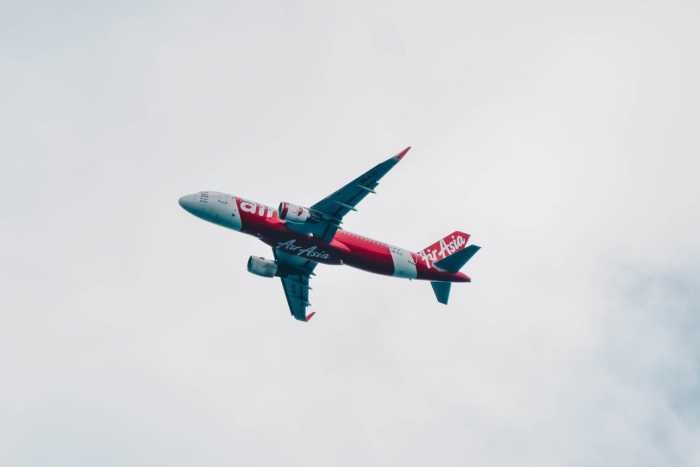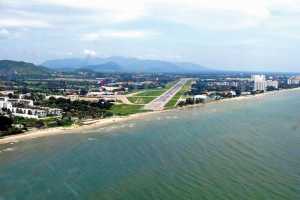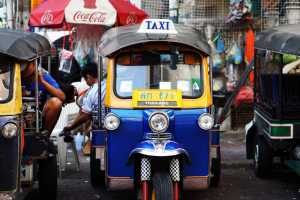
Low Cost Carriers in for the Long Haul.
12th Jan 2011

The long haul low cost carrier is now firmly established and it is only a matter of time before such an operation is established in Phuket, with the associated job and tourism benefits.
So far the only established long haul LCC out of Asia is AirAsia X out of Kuala Lumpur to London, but the announcement in May that Jetstar, the rapidly growing LCC offshoot of Qantas, that already flies directly into Phuket from Australia, will start long haul flights out of Singapore to Australia, north Asia and/or European destinations from late 2010 emphasises the growing trend of this business model.
As a premier tourist destination Phuket will eventually be on the long haul LCC radar of European carriers in-bound, although the model has yet to gain traction in that market. In Phuket it may have to wait for a carrier like AirAsia to firmly establish its second hub after Kuala Lumpur before this happens. AirAsia, at present, has not indicated it will start such services.
The history in Asia of long haul LCCs is not good, although AirAsia X seems to be doing OK at this quite early stage. The best example of failure is Hong Kong based Oasis Hong Kong Airlines, which went into liquidation in April, 2008 after less than two years operation, a victim of high oil prices undermining its, at the time, adventuress business model of offering fares as low as $142 (4320 Baht at today's exchange rate) one-way to London.
The trouble was that with the fuel prices going sky high Oasis could not sustain a service that was punctual, top notch service, lots of legroom and services usually found on full service commercial (legacy) carriers. One interesting lesson from the Oasis closure was that at the time it stranded hundreds of school children in Hong Kong who were due to return to school in London. In other words the long haul, LCC model's prices were very attractive for this segment of the market.
One major issue for long haul LCCs to be profitable is that they must forsake seat space on relatively small aircraft to ensure comfort on a long haul flight, when the LCC business model is built around cramming as many people as possible in a small commercial aircraft (usually a Boeing 737 or Airbus 320 which have between 160 and 180 seats).
But the Oasis experience has not deterred the LCC industry from venturing into the long haul market, a concept people in the airline industry thought as impossible a few short years ago. For example in Europe in 1985 the average flight by an LCC was around 400 kilometres. In 2007 it was closer to 1000 kilometres. In the U.S. where Southwest Airlines pioneered the low cost model in the 1970s, the average flight went from 600 kilometres to around 1200 kilometres over the same period.
The lines between LCCS and full service models are therefore being blurred. For example smaller legacy carriers are reducing in-flight services; some LCCS are introducing frequent flyer programmes and increasing their product offerings.
There are others: some legacy carriers have reduced their seat pitch (the gap between the back of each seat) introduced baggage services charges, eliminated free food and reduced the number of aircraft types in their fleets for more cost effective maintenance.
And to give you an idea of what LCCs have eliminated, in general, on short haul routes (500-600 miles) that may not be as possible on a long haul flight here are some of the traditional services included in a full service ticket price that have gone: hot towel, alcoholic beverages, tea and coffee, a hot meal, meal trays, cutlery and napkin, free newspaper, increased seat pitch, lounge facilities and a frequent flyer programme.
You can see this is changing as the LCC model progresses. For example two LCCs that service Phuket International Airport the Malaysian LCC Firefly and Thai AirAsia, between them offer the following services that was not part of the original LCC business model: self check-in, pre-booked meals, supersized luggage, pick a seat, allocated seats (it used to be a mad rush to get the best seat) 20kg free checked in baggage allowance and complimentary in-flight refreshments with light snacks (many LCCs still charge for food on board).
Initially LCCs did not offer in flight entertainment (IFE) because of the cost and weight to the aircraft and because it was not logical for short haul flights, but now they are introducing IFE because of the longer sector lengths being flown (JetBlue, an American innovative LCC has live TV and satellite radio with pay per view news channels ).
The long haul model has also had to introduce services and facilities not previously planned for LCCs such as ovens to heat food a seat pitch higher than the standard 29-31 inches for standard LCCS and on-board ancillary revenue streams such as GSM and internet connectivity services (OnAir, a pioneer in such services offers these and they are being taken up by larger commercial airlines).
Finally a measure of the growth of LCCS can be seen by comparing the number of routes in Europe and the United States in 2000 (there were none in Asian then) to 2006 when there were 6941 flights per week (it would be substantially higher now) in Asia. This compares to 35,000 per week in North America and 23,000 in Europe.
The inexorable growth of the LCC into long haul flights will eventually impact on Phuket when the economics make it worthwhile. This may take a while, although it should be remembered that when LCCs first really took off as a business model in Europe through Ireland's Ryanair and UK's EasyJet, the doomsayers were predicting it would not even profitably work in Asia because of distances, lack of secondary airports and the cost of fares. They were wrong.









